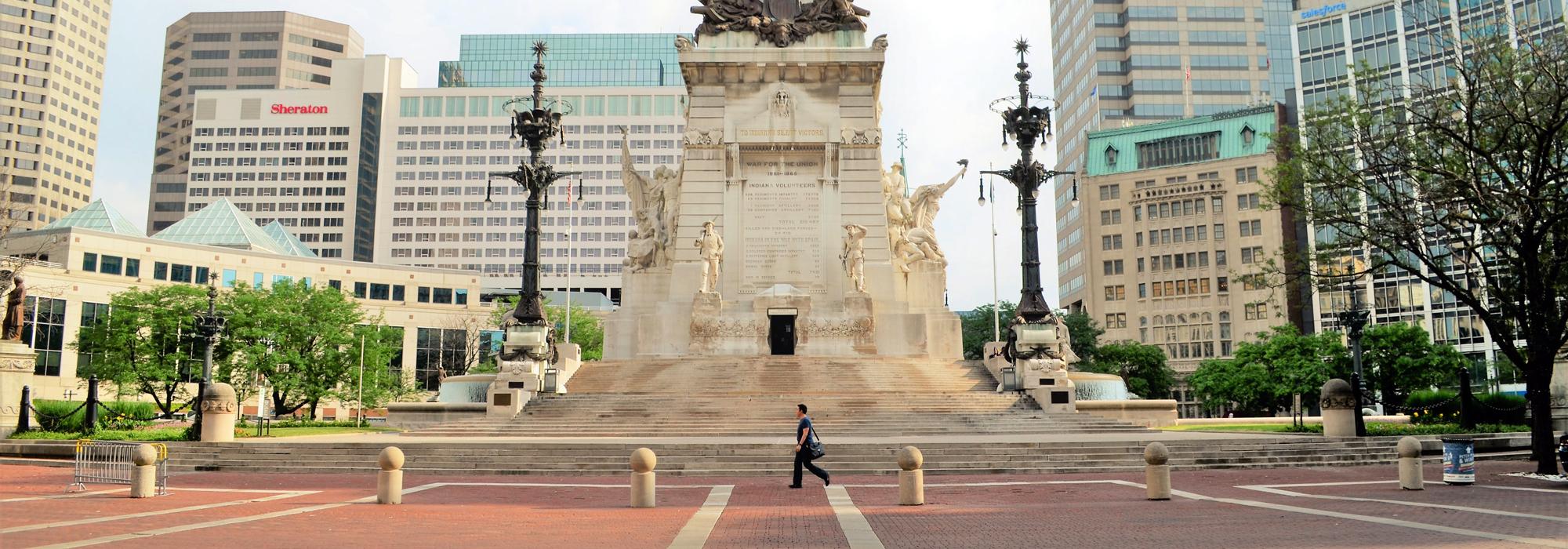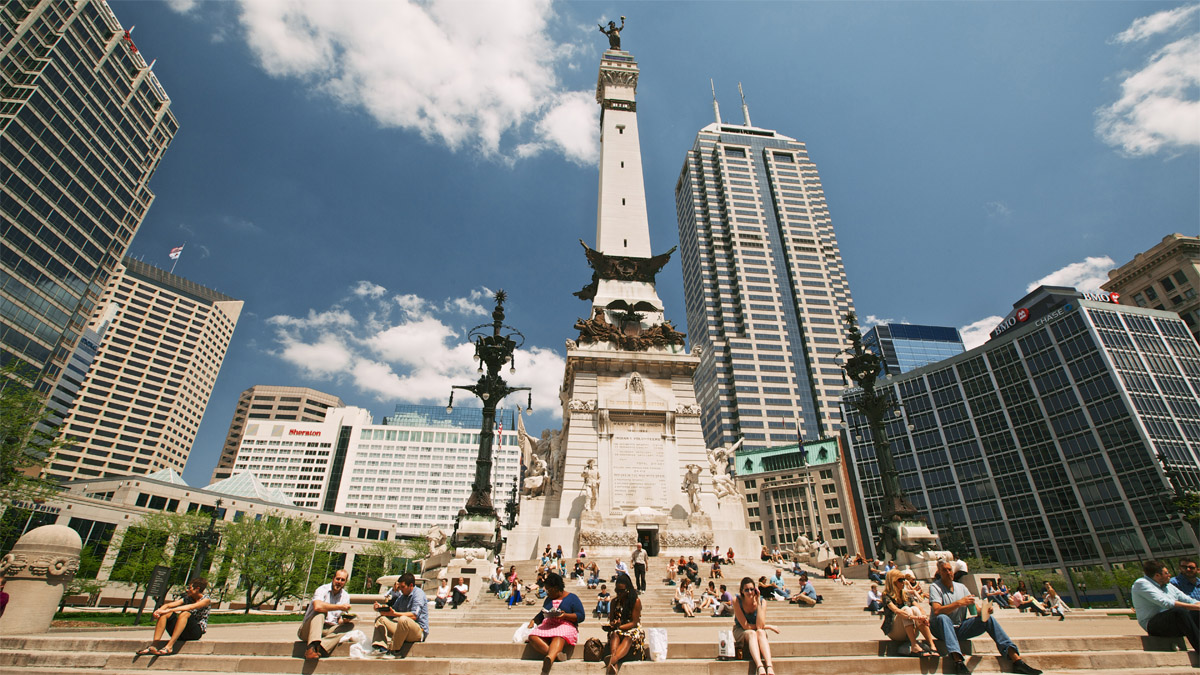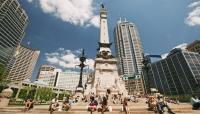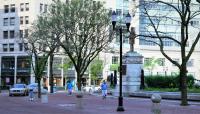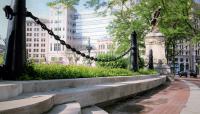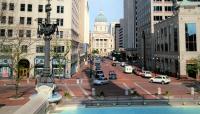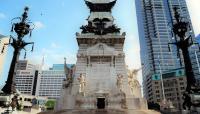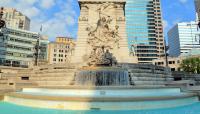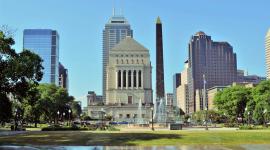Landscape Information
The prominent public space at the heart of Alexander Ralston’s 1821 Mile Square, this circle was initially the site of the Governor’s Mansion. The area fell into decline in the 1850s, and in 1857 the building was demolished. In 1867 the city developed Circle Park in the then-derelict landscape, and in 1884 a statue of General Oliver Morton, fourteenth Governor of Indiana and an abolitionist, was erected in its center, oriented to face his enemies in the Confederate south.
In 1887 an international competition was announced to develop a monument honoring war veterans from Indiana. The Soldiers’ and Sailors’ Monument by German architect Bruno Schmitz was chosen, and it was dedicated in 1902. Surrounded by four lawn-covered quadrants with flowering shrubs along the perimeter, the approximately 300-square-foot monument and its setting include an obelisk composed of Indiana limestone and its elevated square base adorned with statuary on all sides, a stepped circular terrace, and accompanying water features. The second tallest monument in the U.S. when it was erected, Soldiers’ and Sailors’ is visible throughout much of downtown and is an iconic symbol of the city.
In 1977 landscape architects Jim Browning and Alan Day, of local firm Browning Day Mullins Dierdorf, redeveloped Monument Circle as a pedestrian-centric landscape. They reclaimed space formerly dedicated to automobile traffic, designing a curb-free plane of fully flush running bond brick paving radiating out from the monument to the building fronts. The monument and its historic furnishings were ringed with stone bollards adorned with circular finials and four arcs of honey locusts. The monument was listed in the National Register of Historic Places in 1973 and was added to the Indiana War Memorials Historic District in 2016.



